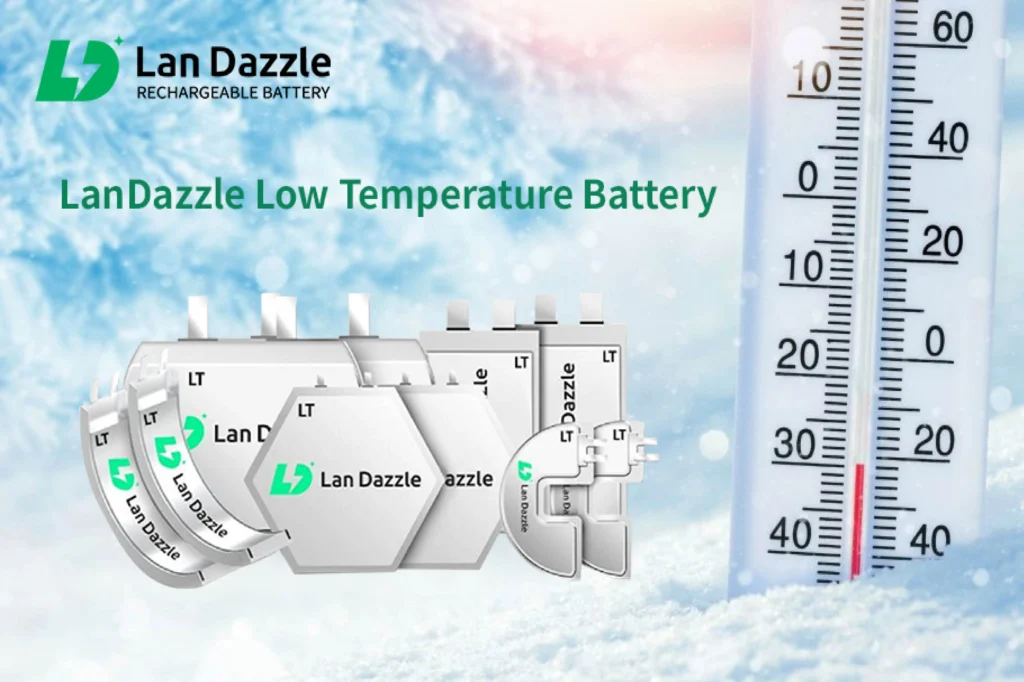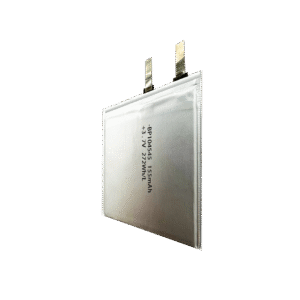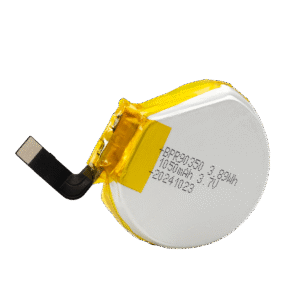Table of Contents
Cold weather can be brutal on your battery. As temperatures drop, voltage plummets, internal resistance spikes, and chemical reactions slow to a crawl — leaving your battery weak, sluggish, or completely dead. Whether you’re starting a car, powering equipment, or running a device outdoors, winter’s chill exposes the limits of ordinary batteries.
In this guide, we’ll break down how cold affects battery performance and show you how to choose the best battery for cold weather — one that delivers reliable power even in freezing conditions.
Battery Comparison and How They Perform in Cold Weather
When temperatures drop, not all batteries handle the cold the same way. Each chemistry has its strengths and weaknesses. Let’s take a closer look at how LiPo batteries, Lithium Iron Phosphate (LiFePO₄), Lead-Acid and AGM batteries perform in freezing environments.
LiPo batteries
LiPo batteries outperform most chemistries when designed specifically for low-temperature use. Thanks to their high energy density and low internal resistance, they can deliver strong discharge performance even in sub-zero environments. Advanced low-temperature LiPo batteries maintain higher capacity retention at –20°C (–4°F) and offer faster recovery once temperatures rise. Their lightweight design also makes them ideal for drones, robotics, and other compact devices that operate in cold conditions.
Lithium Iron Phosphate (LiFePO₄)
LiFePO₄ batteries offer excellent stability, long cycle life, and consistent voltage. However, cold weather can temporarily limit their performance — below 0°C (32°F), their charging capability drops sharply, and charging below freezing can risk permanent damage. The good news is that many modern LiFePO₄ packs now include built-in heating systems or battery management systems (BMS) that regulate temperature, making them much more reliable in winter environments.
Lead-Acid Batteries
Traditional lead-acid batteries have been around for decades, but they struggle in cold climates. Their electrolyte thickens in freezing conditions, chemical reactions slow dramatically, and the available power output can fall by 50% or more at –18°C (0°F). While they’re inexpensive and widely available, they’re not the best battery for cold weather if reliability in freezing temperatures is your goal.
AGM Batteries
Absorbent Glass Mat (AGM) batteries are a type of sealed lead-acid battery designed for better performance and lower maintenance. They perform slightly better than traditional flooded lead-acid batteries in cold conditions because their design minimizes electrolyte movement and internal resistance. However, their capacity still drops significantly below 0°C (32°F), and charging them in sub-zero temperatures can cause damage. AGM batteries are durable but heavy and less efficient in extremely low temperatures.
How to Choose Battery for Cold Weather?
Not all batteries are built for the same purpose — and choosing the best battery for cold weather depends on where and how you use it. Different applications have unique power demands, temperature ranges, and weight requirements. Here’s how to make the right choice for your needs.
1. Vehicles and Starting Applications (Cars, Trucks, ATVs)
For vehicles that need strong starting power in freezing mornings, AGM batteries are a reliable option. Their sealed design resists vibration, and they deliver higher cold-cranking amps (CCA) than standard lead-acid batteries. However, for electric vehicles or hybrid systems that need lightweight, high-efficiency power, LiFePO₄ batteries with built-in heating systems are becoming the smarter choice — offering longer life and faster recharging.
Best options: AGM or heated LiFePO₄ batteries.
2. Outdoor Equipment and Backup Power Systems
Generators, solar energy storage, and remote monitoring systems often face long exposure to low temperatures. LiFePO₄ batteries perform well in these applications due to their high cycle life and stable discharge, but only if they’re equipped with low-temperature charging protection. For heavy-duty industrial or backup power use, AGM batteries remain cost-effective and dependable.
Best options: LiFePO₄ batteries with BMS heating or AGM batteries for stationary systems.
3. Drones, Robotics, and Portable Devices
When weight, space, and performance matter most, low-temperature LiPo batteries are the clear winner. They provide high discharge rates, excellent energy density, and reliable performance even at –20°C (–4°F). This makes them ideal for aerial drones, robotic systems, wearable tech, and outdoor sensors.
Best option: Custom low-temperature LiPo batteries.
4. Marine, RV, and Off-Grid Applications
For boats, RVs, and off-grid systems that operate in varying weather, LiFePO₄ batteries provide the best balance between capacity, weight, and durability. They’re lighter than lead-acid batteries and maintain stable output during long discharges — perfect for powering lighting, heating, and appliances in cold environments.
Best option: LiFePO₄ batteries with integrated temperature management.
Factors to Consider When Choosing a Cold Weather Battery
1. Operating Temperature Range
Not all batteries are designed to work below freezing. Check the manufacturer’s specifications for both operating and charging temperature limits. Some lithium batteries, especially low-temperature LiPo or LiFePO₄ models, can perform down to –40°C when equipped with built-in heaters or advanced electrolytes.
2. Discharge Rate (Cold Cranking Performance)
Cold temperatures increase internal resistance, reducing the battery’s ability to deliver current. For vehicles and equipment that need strong startup power, look for a battery with high Cold Cranking Amps (CCA) or strong low-temperature discharge capability. AGM and low-temp LiPo batteries usually perform better in this regard.
3. Charging Capability in Low Temperatures
Some batteries can operate in the cold but cannot safely charge in it. For example, standard LiFePO₄ batteries should not be charged below 0°C (32°F). If you need to recharge in cold environments, choose a battery with a built-in heating system or smart BMS that enables safe charging below freezing.
4. Energy Density and Weight
In applications like drones, robotics, or portable equipment, weight is a critical factor. LiPo batteries offer higher energy density and lighter weight compared to lead-acid or AGM batteries — providing more power without adding bulk.
5. Cycle Life and Durability
Cold environments can stress a battery’s materials and shorten its lifespan. Choose a battery that offers both cold-resistance and a high cycle life. LiFePO₄ batteries are known for their long cycle durability, making them ideal for systems that experience frequent charging and discharging.
How to Use and Maintain Batteries in Cold Weather
1. Keep Batteries Warm
Cold temperatures slow down chemical reactions inside the battery, reducing capacity and power output. Keep batteries insulated or stored close to your body to maintain warmth. For extreme environments, consider using batteries with built-in heating elements or external warming wraps.
2. Charge Before Use
Always charge your batteries to full capacity before heading into the cold. Fully charged batteries perform better and are less likely to freeze than partially charged ones.
3. Smart Storage Practices
When not in use, store batteries in a cool, dry place — not in freezing or hot environments. Charge them to about 50–70% before long-term storage, and check their charge level periodically to prevent over-discharge.
4. Avoid Extreme Temperature Swings
Rapid changes from cold to warm can cause condensation, which may damage battery components. Allow batteries to return to room temperature gradually before charging or using them.
Custom Low Temperature Battery Solutions – LanDazzle
Founded in 2018, LanDazzle is a leading lithium manufacturer focusing on the R&D of special shaped lipo battery, low temperature battery and lithium battery pack.

Our Low Temperature Battery Advantages:
- Shape Advantages: With advanced stacking technology, our batteries can be customized into various shapes and sizes, offering exceptional design flexibility and efficient use of internal space. This allows for the creation of small, ultra-thin batteries that fit compact or uniquely shaped devices while maintaining reliable low-temperature performance — ideal for professional equipment and space-limited applications.
- Performance Advantages: Our lithium batteries are built to perform in extreme cold. They maintain over 60% capacity at –40°C (0.5C discharge rate) and up to 80% at –30°C, ensuring dependable power when most batteries fail. With a wide operating range of –40°C to 60°C and certifications including UL, CE, and UN, they deliver both safety and reliability for demanding environments.
- Weight Advantages: Compared to LiFePO₄ batteries of the same voltage and capacity, low-temperature LiPo batteries are significantly lighter. Their flexible pouch design replaces the heavier metal casing used in LiFePO₄ cells, resulting in more compact, efficient, and lightweight power solutions — perfect for applications where every gram matters.
Conclusion
Cold weather can quickly drain ordinary batteries, but with the right technology, consistent performance in freezing temperatures is achievable. Among all options, low-temperature LiPo batteries stand out for their lightweight design, high discharge rate, and excellent efficiency at sub-zero temperatures. LiFePO₄ batteries also perform well when equipped with smart BMS or built-in heating, while AGM batteries remain a cost-effective choice for starting and backup power.
At LanDazzle, we specialize in custom low-temperature lithium battery solutions engineered to maintain reliable power even at –40°C. Our batteries combine advanced materials, flexible designs, and proven safety to meet the demands of drones, robotics, outdoor equipment, and more.
Ready to find the perfect low temperature battery solution for your products? Contact our team at LanDazzle today to discuss your custom battery needs and discover how our high-performance solutions can power your devices in any environment.
Contact us today to get a free consultation and explore how our custom battery solutions can bring your devices to life.
Email: info@landazzle.com
Whatsapp: +8618938252128
Related Articles:
Low Temperature Battery: How They Work and How to Choose the Right One
Low Temperature Battery fot Action Camera
Lithium Battery Low Temperature Performance Explained
The Ultimate Guide to Choose Lithium Battery for Cold Weather

